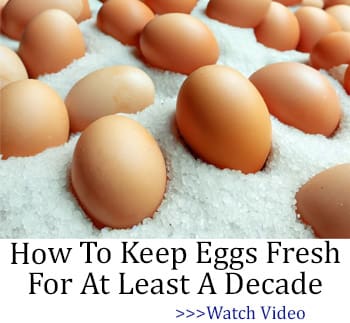My guess is none of you experienced a long-time hunger. But probably most of you are familiar with the feeling of skipping 2 or 3 meals. Not a very pleasant one. During that time did you experience fatigue or dizziness? These are the first general symptoms of malnutrition.
An average man cannot survive without food for more than 8 weeks. A famine may last for years like the Tempo Famine in Japan (4 years). Not many of us have such large stockpiles. And it’s not even enough to stockpile food in order to properly prepare since you may develop malnutrition if you lack a single vitamin in your diet.
During the Norway Famine
Bark Bread – a bread made by adding inner bark (which carries organic nutrients) to the flour as an extender to make it last longer, bake more breads and still keep them nutritious. In fact bark meal contains more zinc, magnesium, and iron than is found in rye and wheat and it is full of fiber.
It was widely used during the Norway famine, and the Finland Famine, and it was commonly eaten by our ancestors.
The bark component was usually made from trees like elm, ash, aspen, rowan, birch, pine, and moss.
The inner bark is the only part of a tree trunk that is actually edible, the remaining bark and wood is made up of cellulose which no man can digest. The dried and ground inner bark was added: about 1/3rd “bark flour” to the remaining grain flour.
The bark, however, adds a rather bitter taste to the bread and gives particularly white bread a grey-green hue. Though bark today is sometimes added to pastry as a culinary curiosity, bark bread is considered an emergency food, and as is common with such food, it is phased out as soon as the availability of grain improves and people forget about it.
During the Famines of Russia
During famines in Russia, nettle and orache were used to make bread or soups (But you can also make polenta, pesto, and purée). Chamiso and Shadscale (two species of orache) were also commonly eaten by Native Americans. Both are rich in Vitamin E (much needed in a food crisis).
Nettle has a flavor similar to spinach (prepared in exactly the same way) when cooked and is rich in vitamins A, C, iron, potassium, manganese, and calcium. Soaking stinging nettles in water or cooking will remove the stinging chemicals from the plant.
Some breads were made out of orache and bran at the Siege of Leningrad, using machine oil – the only oil still available. (see picture) The city authorities provided the population with foodstuffs salvaged from industry. They made hard cakes of pressed seed hulls left over from processing of oil from sunflower, cotton, hemp, or linseed. These seed cakes sustained many lives in Leningrad.
France, Germany, and Belgium During the Famine of WWI and WWII
Rutabagas were widely used as a food of last resort in Europe during the famine of World War I and World War II. The roots are prepared for human food in a variety of ways, and the leaves can be eaten as a leaf vegetable. Especially the French and the Germans boiled rutabaga making a stew.
During the Irish Famine
It is also called “The Potato Famine” since it was caused by a devastating potato disease (blight).
Corn meal sold for a few times more pennies a pound, so the men were unable to earn enough money to adequately feed themselves let alone their families as food prices continued to climb.
As a result, children sometimes went unfed so that parents could stay healthy enough to keep working for the desperately needed cash. Many of the workers, poorly clothed, malnourished, and weakened by fever, fainted or even dropped dead on the spot.
As the Famine worsened, and looters became commonplace and the British continually sent in more troops instead of food.
The Irish in the countryside began to live off wild blackberries, ate nettles, turnips several species of edible kelp, including dulse and Irish moss, old cabbage leaves, edible seaweed, fungi, shellfish, roots, frogs, roadside weeds, and even green grass.
Finally, Government-sponsored soup kitchens were established throughout the countryside and began dispensing a nutritious food called Stirabout.
‘Stirabout,’ is a substantial porridge made from two-thirds Indian corn meal and one-third rice, cooked with water. By the summer, three million Irish were being kept alive on a pound of stirabout and a four-ounce slice of bread each day.
Seed potatoes, many having been eaten, had been in short supply. Planters had either been involved in the public works projects or had been too ill to dig the next year. Others were simply discouraged, knowing that whatever they grew would be seized by landowners, agents, or middlemen as back payment for rent.
In a food crisis, you can buy EVERYTHING with food.
During the Mormon Famine in the Western United States
Sego lily bulbs were eaten by the Mormon pioneers when their food crops failed. The flower is endemic to the Western United States and it is actually the state flower of Utah. The bulbs of the flower were roasted, boiled, or made into porridge. The plant was also eaten by Native Americans.
During the Dutch Famine
During WWII the northern provinces became isolated from the liberated parts of Europe. Food stocks ran out, as did fuel stocks. Then a harsh winter began.
They also boiled and ate sugar beets. These are high in fiber, and manganese, and are a decent source of vitamin C, potassium, and magnesium. The greens, though, are really the nutritional powerhouse of the plant. They are super high in fiber, vitamin A, vitamin C, vitamin K, riboflavin, calcium, iron, magnesium, copper, and manganese.
During Most Famines
Grass pea is a particularly important crop in areas that are prone to drought and famine, and is thought of as an ‘insurance crop’ as it produces reliable yields when all other crops fail.
Well, that’s something people eat when there’s nothing else to eat, because eating grass pea may cause a disease that basically paralyzes the lower limbs. The disease occurs only when the seeds are consumed as a primary protein source for a prolonged period but are safe to eat for days maybe weeks.
When a famine occurs, that’s a hell of a lot of people who end up eating this grass pea. The ratio is fairly small with about 10 out of 1000 people who get the disease.
Flour was made out of grass peas (named almorta) and they mixed it with wheat flour to eliminate the toxicity.
During Holodomor (The Ukrainian Famine)
For those faint-hearted: don’t read the next paragraph. During the Holodomor, Ukrainians faced severe food shortages. They ate grains, potatoes, weeds, and wild plants when available. Some consumed animal products, including diseased or dead animals. In desperation, people resorted to eating tree bark and grass. Cannibalism also occurred in extreme cases of starvation.
Preparing for a food crisis or famine means preparing for at least one year. But famines can last up to 7 years and it can be wiser to have the means to produce your own food rather than stockpiling. One of the best ways to do that is by building a system totally independent from the environment. And this CAN be done.
This article first appeared here.
Wild Edibles People Ate During The Great Depression
The $200 A Pound (Dried) Common Mushroom That Could Be Growing In Your Area (Video)
Amish Powerless Tools For A World Without Power












